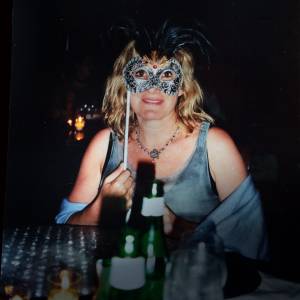apocalyptical
We had purchased these tickets for Radiolab Live months ago before I registered for my photography class. I didn't have much time to take pictures, because I cut out of class early and raced to the show.
I did pay a visit to the Ladies Lounge and quickly snapped a couple which in some small way relate to the homework for this week's photography class.
OK, here are some of the highlights from the class.
The theme this week is (Magical Seeing through the) Prism of Memory.
Memory is a potent theme for photographers.
Although you snap a picture in the present moment - as soon as you take the picture, it is in the past.
A way to freeze time is inherent in the process of photography.
Photography offers a kind of immortality - images serve as triggers for memories.
Often, we only remember because of the pictures.
There are two different kinds of photographic memories:
personal or autobiographical
and
collective memory - the images may bring a sense of wistfulness, a yearning for a time or place that is in our DNA, that may not be in our conscious memory or experience.
“All photographs are memento mori. To take a photograph is to participate in another person’s (or thing’s) mortality, vulnerability, mutability. Precisely by slicing out this moment and freezing it, all photographs testify to time’s relentless melt.”
― Susan Sontag
“What I like about photographs is that they capture a moment that’s gone forever, impossible to reproduce.”
― Karl Lagerfeld
"We drove 22 miles into the country around Farmington. There were meadows and apple orchards. White fences trailed through the rolling fields. Soon the sign started appearing. THE MOST PHOTOGRAPHED BARN IN AMERICA. We counted five signs before we reached the site. There were 40 cars and a tour bus in the makeshift lot. We walked along a cowpath to the slightly elevated spot set aside for viewing and photographing. All the people had cameras; some had tripods, telephoto lenses, filter kits. A man in a booth sold postcards and slides -- pictures of the barn taken from the elevated spot. We stood near a grove of trees and watched the photographers. Murray maintained a prolonged silence, occasionally scrawling some notes in a little book.
"No one sees the barn," he said finally.
A long silence followed.
"Once you've seen the signs about the barn, it becomes impossible to see the barn."
He fell silent once more. People with cameras left the elevated site, replaced by others.
We're not here to capture an image, we're here to maintain one. Every photograph reinforces the aura. Can you feel it, Jack? An accumulation of nameless energies."
There was an extended silence. The man in the booth sold postcards and slides.
"Being here is a kind of spiritual surrender. We see only what the others see. The thousands who were here in the past, those who will come in the future. We've agreed to be part of a collective perception. It literally colors our vision. A religious experience in a way, like all tourism."
Another silence ensued.
"They are taking pictures of taking pictures," he said.”
― Don DeLillo, White Noise
We looked at the photographs whose work emphasizes the prism of memory
Corinne May Botz - book "The House Remembers"
Robert Polidori - investigations of places that have been altered by circumstances - i.e. a children's nursery school in Chernobyl, New Orleans after Katrina
Bill Jacobson

Comments
Sign in or get an account to comment.


